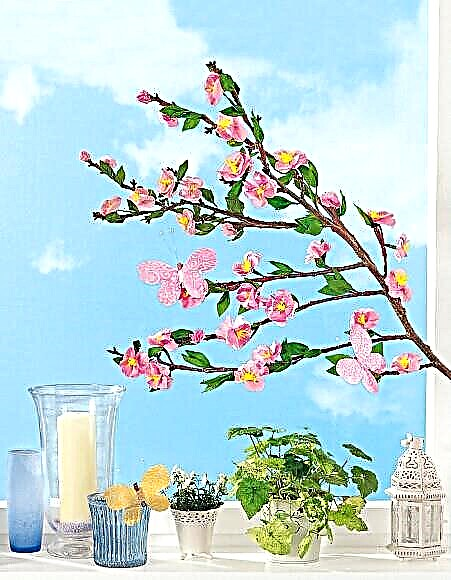What fabric to choose for bedding? We consider the pros and cons of different materials.

Whether you sew bedding with your own hands or choose a finished one, the material from which it will be made is no less important than a pleasant coloring. Your comfort during sleep, and how long the kit will last, and how easy it will be taken care of, will depend on the choice of fabric. Consider the pros and cons of popular fabrics for bedding.
Density table of popular fabrics
Chintz

The most inexpensive fabric for bedding, but also the most short-lived. The fact is that chintz is a rather thin, loose material: it quickly wears out, thinns, fades. Chintz is made from 100% cotton, so this is natural linen, but such sheets and pillowcases will not be smooth or silky to the touch.
Pros and cons of chintz for bedding:
+ naturalness
+ low price
- fragility
- the quality is not up to par
Complete bedding size chart
Calico

Calico bedding is one of the most common options. This material is natural (100 percent cotton), hygienic, easy to care for and inexpensive. True, coarse calico linen is not the most durable (although it serves longer than chintz). In comparison with more expensive materials, calico calico fades faster, begins to thin out and tear. But the calico does not require special care.
Pros and cons of calico for bedding:
+ naturalness
+ hygiene
+ easy care
+ low price
- not the longest life
What fabric is calico?
Poplin

Poplin for bedding is also made, as a rule, from 100 percent cotton. In this way, he looks like calico. The difference is in the thickness of the fibers. In coarse calico, the weft and warp threads are the same in thickness, while in poplin the weft threads are thicker, and the warp is thinner. Poplin is smoother and more pleasant to the touch than calico, lasts longer, wrinkles less. Cotton poplin does not require special care.
Pros and cons of poplin for bedding:
+ naturalness
+ hygiene
+ greater durability than calico
+ pleasant to the touch
+ easy to care
- more expensive than calico
Poplin - papal cotton fabric
Satin

Satin is one of the best options for making bedding. This fabric is denser and stronger than calico and poplin, and due to the special satin (satin) weave it is also smooth, pleasant to the touch. Satin paints last longer, prints are more clear. Satin for bedding, as a rule, is also made of cotton, so this fabric is also natural and hygienic. Importantly, it looks beautiful: a flat dense surface and a soft restrained shine. But sateen also costs more than calico or poplin.
Pros and cons of satin for bedding:
+ naturalness
+ hygiene
+ smoothness and silkiness
+ noble appearance
+ durability
- higher price than calico and poplin
3 types of pillowcase clasps
Percale

Another great option for bedding. Percale is a plain weave fabric, such as a calico. But for its production, long-fiber high-quality cotton is used, the fibers of which are additionally processed with a special composition. Due to this, plus - due to the dense weaving, the percale is very strong. Despite the fact that the fabric is not too thick, it can be used for bedcloths: percale reliably holds down and feathers inside. The classic percale for bedding is made of cotton. Percale usually costs more than coarse calico, but not too expensive - for example, it is usually cheaper than satin. It is smoother and more uniform to the touch than calico, but satin has no such satin silkiness and softness as sateen.
Pros and cons of percale for bedding:
+ naturalness
+ hygiene
+ strength, density
+ durability
- there is no that smoothness and silkiness that satin
What kind of fabric is percale?
Linen

The main advantages of flax are naturalness, environmental friendliness, the ability to cool in the heat and keep warm in the cold. Flax is considered a noble material, but if you expect soft and satin smoothness from bedding, like satin, probably a set of flax may not suit you. If you love this material and sew clothes from it, it will serve for a long time: for years, or maybe decades. From regular washes, linen becomes only softer and more pleasant to the touch. But ironing 100 percent linen badly and wrinkles. Linen fabric for bedding is not cheap, expensive and calico, and poplin, and percale.
Pros and cons of linen for bedding:
+ naturalness
+ environmental friendliness
+ noble appearance
+ long service life
- not suitable for everyone
- crumpled and hard to iron
- pretty high price
What kind of linen fabric: properties, care, sewing features
Bamboo

Bamboo fabric for bedding can be 100 percent made from fibers and leaves of bamboo stalks, or other fibers can be added to them. Usually it is cotton, synthetics or silk. The properties and price of the material, respectively, will depend on the presence of only bamboo or other fibers in the composition. One way or another, bamboo underwear is usually more expensive than cotton. But the quality of bamboo fabrics is impressive. They have bactericidal properties, as a rule, are hypoallergenic, durable, pleasant to the touch and have a beautiful appearance, besides, they crumple a little.
Pros and cons of bamboo fabric for bedding:
+ hygiene
+ durability
+ comfort in use
- pretty high price
- delicate wash required
How to sew a duvet cover with your own hands: an easy way
Tensel

He's a tensel, he's a lyocell / lyocell. It is made of eucalyptus wood and is considered a natural material of a new generation. Tensel resembles soft cotton to the touch, has a beautiful appearance with a uniform surface and soft shine. It is believed that tensel, like the eucalyptus from which it is made, has bactericidal properties. It is also hygienic, has good breathability, hygroscopicity superior to cotton, plus - it is durable and durable. It is better to wash it in a delicate mode at a temperature of no higher than 30 degrees, iron at low temperatures (however, the tensel is not wrinkled). A 100 percent tencel is usually quite expensive. Compare prices and specify the composition and quality: a too cheap tensel may not be dense enough or contain additives.
Pros and cons of Tensel bedding:
+ hygiene
+ antibacterial properties
+ strength, wear resistance, durability
- need special care
- pretty high price
Tensel - Eucalyptus Silk Cloth
Flannel

Flannel, as a rule, is made of cotton, so the linen from this fabric will be natural with all the positive qualities, respectively. A flannel feature is fleece, which provides the fabric with softness and the ability to retain heat. Flannel is suitable for baby bedding, for a set for the winter, but if you are cold, it will be appropriate in the summer. Flannel requires special care: you need delicate washing and spinning, drying out of direct sunlight. Over time, drank (spools) may appear on such linen. Flannel underwear cost not so cheap as coarse calico, but not too expensive.
Pros and cons of flannel bedding:
+ hygiene
+ naturalness
+ ability to keep warm
+ comfort in use
- need special care
- not always suitable for summer
What is flannel and how to work with it
Terry cloth

Terry cloth more often consists of cotton; linen, bamboo, and synthetic components can also be in the composition. For bedding, it is better to choose a terry, at least 80% consisting of natural fibers.Then the linen will have hygroscopicity, breathability, comfort in use. Since terry cloth is voluminous due to loops on the surface, it will retain heat well. The same texture makes the surface of the terry rough: good for those who like a similar massage effect. Terry linen dries for a long time after washing, but does not require ironing. The loops can stretch out of a too loose web, disrupting the structure of the material. How much terry bedding will cost will depend on the composition and quality of the material. But, as a rule, it does not cost too much.
Pros and cons of terry cloth for bedding:
+ naturalness
+ ability to keep warm
+ massage effect
- dries for a long time
- may not be suitable for summer
How to work with terry cloth: tricks and tips
Microfiber

The concept of "microfiber" combines different types of materials. What they have in common is that they are made of very thin fibers. The raw materials can be different, but more often, if we see microfiber bedding (especially inexpensive), the basis of the material is some kind of synthetic component (for example, polyester, polyamide). The composition may include both cotton and cellulose, the proportions and method of production may be different, from this the quality of the material will change. In a word, it is worthwhile to deal with each material called microfiber separately: to find out the composition and draw conclusions. More often, if such a fabric or linen is cheap, it will mean not too long service life and not the best performance. Microfiber is more expensive with a large percentage, for example, cotton, can be both durable and pleasant to use. But if you do not accept synthetics for bedding, microfiber with synthetic components in the composition is not for you.
It is difficult to single out the pros and cons for the entire variety of microfiber underwear. But it’s better not to choose too cheap a fabric or kit and rely on trusted manufacturers.
How to sew a sheet with your own hands
Silk

Natural silk underwear costs an order of magnitude more expensive than, for example, cotton. There are reasons for this: silk is a truly luxurious material, and linen made of it gives a special feeling during use. The silk is smooth, delicate, flowing, very pleasant to the touch. This lingerie looks great and lasts a long time. But it requires special care: gentle washing at low temperatures, delicate spinning, flattened drying out of the reach of the sun, neat ironing at low temperatures. Also, not everyone likes silk's ability to glide. If you choose fabric to sew your own bedding, you should also consider the difficulties of working with silk as a delicate, rather capricious material.
Pros and cons of silk for bedding:
+ naturalness
+ comfort in use
+ durability (with proper care)
+ luxurious appearance
- high price
- need special care
Features of working with silk
Photo: Ivanovo Textile, Textilelab, Organature, west elm Canada, LLBean, Thoppia, Pure Zone, Ettitude, Great Bay Home, Linen Cupboard, Direct Textile Store, Domestications Bedding



